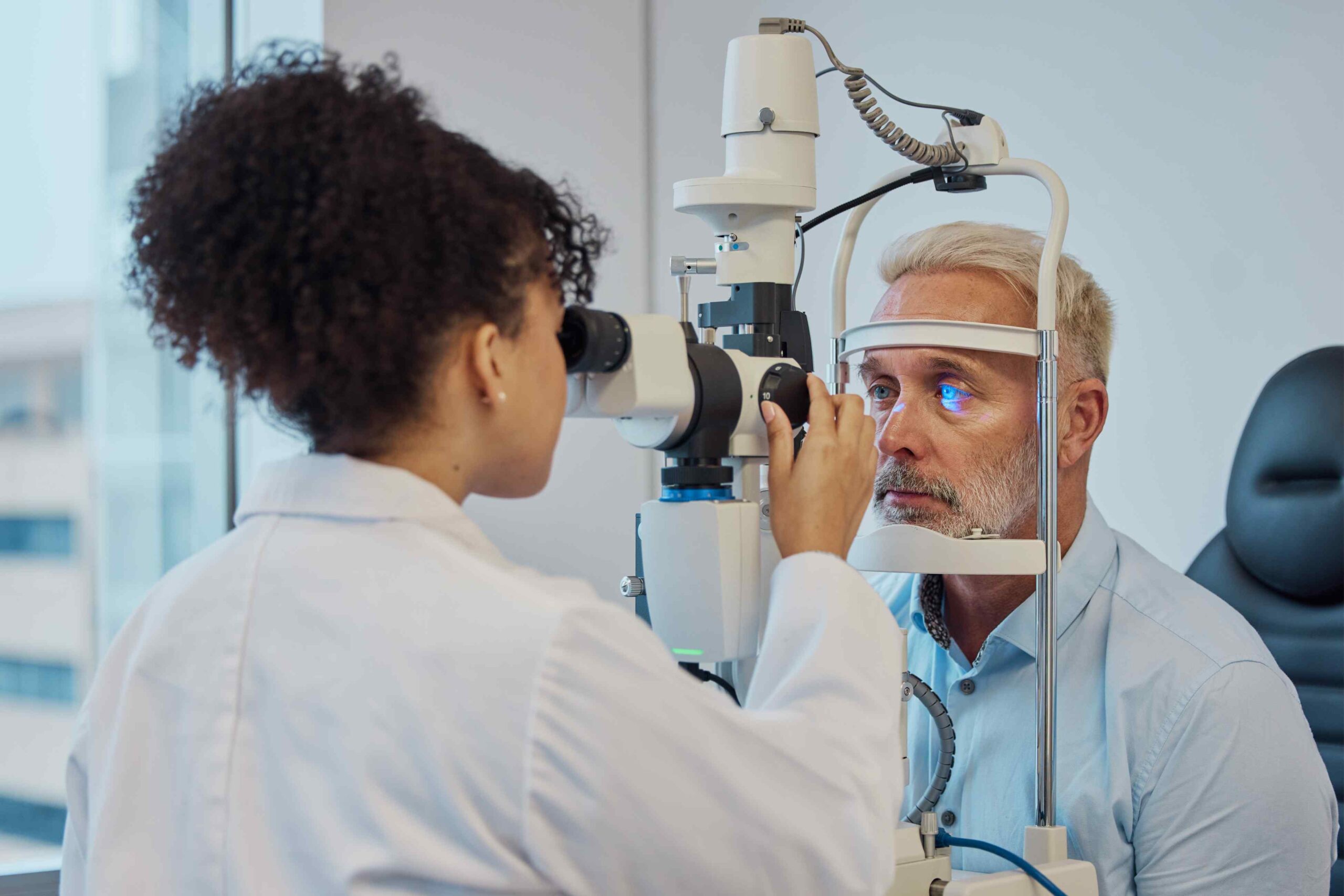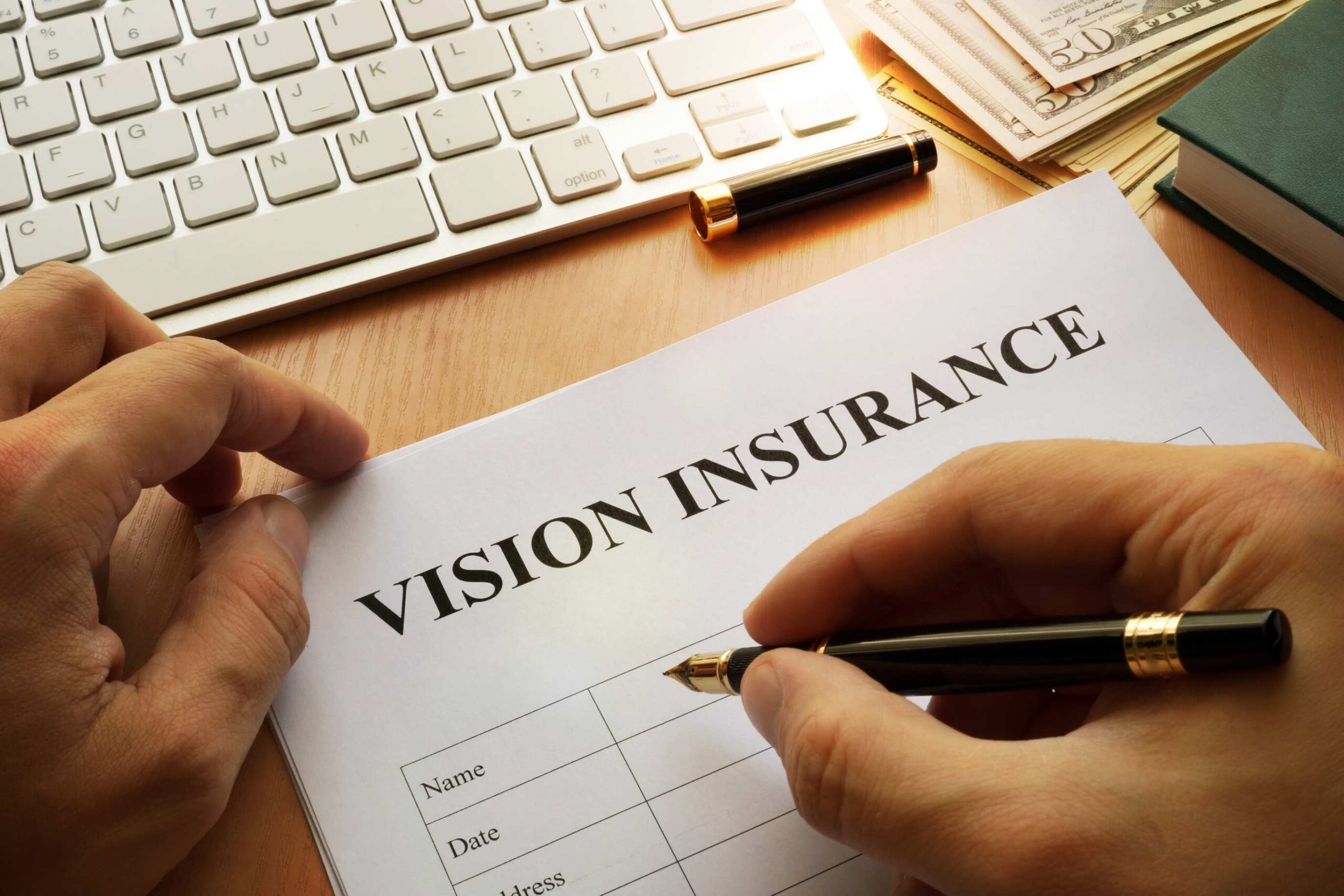The global insurance industry is expected to maintain a growth rate of 2.4% by 2026 (Swiss Re Institute, 2023). To maintain sustained profitability amid slowing economic growth and evolving market dynamics, insurance companies have introduced more flexible insurance products, particularly in the field of health insurance. Vision insurance has emerged as a growing product in the health insurance sector in recent years.
What Does Vision Insurance Cover
 Vision insurance is a type of insurance plan designed to cover eye care expenses, focusing primarily on routine vision care and vision correction. This includes:
Vision insurance is a type of insurance plan designed to cover eye care expenses, focusing primarily on routine vision care and vision correction. This includes:
- Annual eye exams: such as refraction tests and vision screenings.
- Glasses and contact lenses: partial or full coverage for costs.
- Discounts: availablewhen purchasing eyewearor contact lenses from specific eye care clinics or retailers.
Vision insurance is sometimes offered as an additional benefit to encourage individuals to undergo regular eye examinations. It focus generally only on basic eye health needs. “Excluding vision and dental insurance helps health insurance companies keep premiums low. With separate vision and dental plans, you have more flexibility when choosing plans”(Investopedia, 2025).
Eye Insurance vs. Vision Insurance
It’s important to differentiate vision insurance from eye insurance. Eye insurance provides coverage specifically for eye health. It is often included as part of a broader medical insurance plan or as an add-on policy. Also, it helps cover medical costs related to eye care. Coverage usually includes:
- Eye exams and ophthalmic treatments: including routine eye exams and treatments for conditions like myopia, hyperopia, and astigmatism.
- Eyewear and contact lenses: reimbursement or subsidies for eyewearand contacts.
- Eye surgery: Reimbursement for surgerylikeLASIK.
- Eye diseasestreatment: including cataracts, glaucoma, and macular degeneration.
Given the broad scope of coverage, the premiums tend to be relatively higher.
If you’re seeking routine eye care and your medical insurance doesn’t cover eye exams, vision insurance can be a good choice. Regular check-ups and early treatments can effectively prevent worsening conditions and avoid vision impairment.
Why Get Vision Insurance
3.1 Increased Use of Electronic Devices and the Prevalence of Myopia
In modern society, people inevitably contact more with electronic devices for work, study, and entertainment. This leads to extended screen time, often displacing time spent outdoors. Without adequate rest for the eyes, myopia has become one of the most common visual problems worldwide. The incidence of myopia has risen especially among young people.
3.2 High Cost of Eye Treatment
For those with myopia, the costs of annual glasses or contact lenses can be a certain expense. Treatments for conditions like cataracts or glaucoma require multiple check-ups, advanced imaging, and surgery, which can be expensive. The personalized treatment plan depends on well-trained and experienced ophthalmologists. Since many eye treatments are not covered by basic medical insurance, the overall cost is high. People need to have regular checkups and take preventive measures. Purchasing vision insurance can cover some of the costs of routine eye exams, help detect eye abnormalities early. In this way people reduce further expenses for eye disease treatment.
3.3 Preventative Care and Early Detection of Eye Diseases
Regular eye exams are critical for maintaining eye health and detecting potential problems early. Conditions like glaucoma, cataracts, macular degeneration, and diabetic retinopathy often have no symptoms in their early stages but can worsen over time. Early detection can prevent irreversible visual impairments or vision loss. Additionally, eye exams can sometimes reveal signs of other health issues, such as high blood pressure, diabetes, or even brain disorders. Thus, routine eye checks through vision insurance are beneficial for both eye and overall health.
Groups in Need of Vision Insurance
4.1 Teenagers and Students
Teenagers are prone to myopia due to heavy academic pressure and frequent use of electronic devices. Parents may consider purchasing vision insurance for their children to ensure regular eye exams.
4.2 Middle-aged and Elderly Individuals
As people age, their eyes naturally deteriorate, increasing the risk of eye diseases like cataracts, macular degeneration, and glaucoma. For older adults, vision insurance can provide affordable coverage for routine eye exams and help make early detection of eye problems.
4.3 Individuals with a Family History of Eye Diseases
Those with a family history of eye diseases, such as glaucoma, cataracts, or macular degeneration, may be at higher risk themselves. Such individuals are suggested to purchase vision insurance to prevent eye diseases.
4.4 People with Eye Strain from Work
Office workers who spend long hours in front of computers should monitor their eye health to prevent myopia or worsening eyesight. Outdoor workers, such as drivers, construction workers and welders, are frequently exposed to harsh light and UV rays. They should also have regular eye exams to ensure their eye health.
Can People with Low Vision / Visual Impairments Get Vision Insurance
Yes. Most commercial insurance companies offer “routine vision insurance,” which covers basic eye care, including eye exams, glasses, and contact lenses. Even if you already have visual impairments, you can still be eligible for coverage, as long as you can wear corrective lenses. However, this type of insurance typically doesn’t cover low-vision aids or rehabilitation services. Therefore, for people with low vision, vision insurance can serve as basic coverage for routine eye care.
How to Choose the Right Vision Insurance
6.1 Assess Your Needs
 Before choosing vision insurance, determine your or your family’s specific eye care needs. If you require regular eye exams, prescription eyewear, or contact lenses, vision insurance could be very cost-effective. Also, if you’re considering LASIK surgery or have a genetic eye disease and want to cover potential future treatments, vision insurance may not cover these procedures. You might need to consider more comprehensive eye insurance.
Before choosing vision insurance, determine your or your family’s specific eye care needs. If you require regular eye exams, prescription eyewear, or contact lenses, vision insurance could be very cost-effective. Also, if you’re considering LASIK surgery or have a genetic eye disease and want to cover potential future treatments, vision insurance may not cover these procedures. You might need to consider more comprehensive eye insurance.
6.2 Choose the Right Plan
Start Date and Waiting Period:
Most vision insurance plans take effect within a day or two, but always check the specific start date.
6.3 Deductibles
Many vision insurance plans have no deductibles, though premium plans may have small ones.
6.4 Covered Services
Vision insurance typically focuses on routine eye care and does not cover treatment for major eye conditions.
Basic services like eye exams and glasses are usually covered in full or partially, but check specifics for frame allowances and lenses upgrades (e.g., anti-blue light or progressive lenses).
“Additionally, some Vision insurance plans do not cover contact lenses fittings (for first time wearers or established wearers that need to switch to a new brand) or yearly contact lenses evaluations” (Confluence Health, n.d.).
LASIK surgery is usually discounted but not fully covered.
6.5 Claims Process
Make sure you understand how to file claims, whether it supports direct billing from in-network providers, and if there’s an online claims submission option.
What to Consider for Low-Vision Individuals
If you have low vision, make sure the policy is available to those with visual impairments. Also, check the terms for coverage of pre-existing visual conditions to ensure you will be covered.
Conclusion
Having good eyesight is important for everyone. Even if you don’t have any vision problems, the vision insurance can be helpful. It can cover your regular eye check-ups and other eye care needs, giving you extra protection and peace of mind.
Reference
- Jimenez-Sanchez, K. (2025). U.S. tariffs set to slow global economy and insurance premium growth. Swiss Re Institute. https://www.reinsurancene.ws/us-tariffs-set-to-slow-global-economy-and-insurance-premium-growth-swiss-re-institute/?utm_source=chatgpt.com
- Roberte, L. (2024). Why are vision and dental insurance separate? Investopedia. https://www.investopedia.com/why-are-vision-and-dental-insurance-separate-8548493
- Confluence Health. (n.d.). Medical vs Vision Insurance Explained. Retrieved August 7, 2025, from https://www.confluencehealth.org/services/ophthalmology/vision-insurance-explained/?utm_source=chatgpt.com

